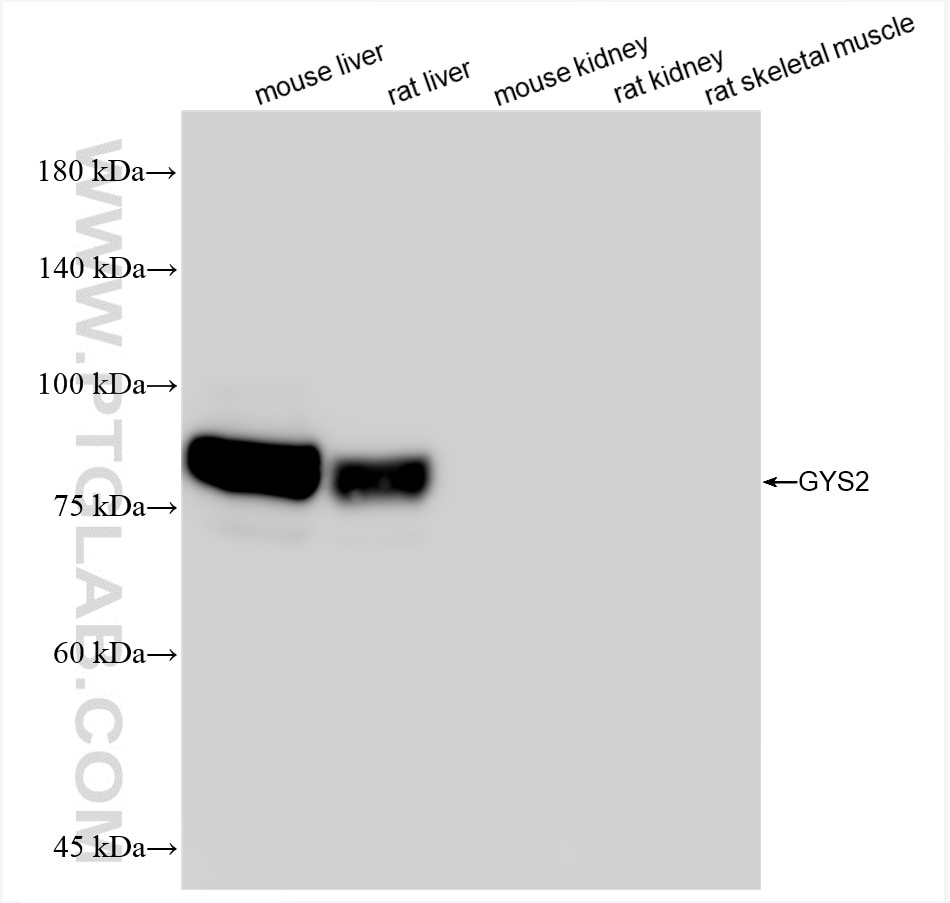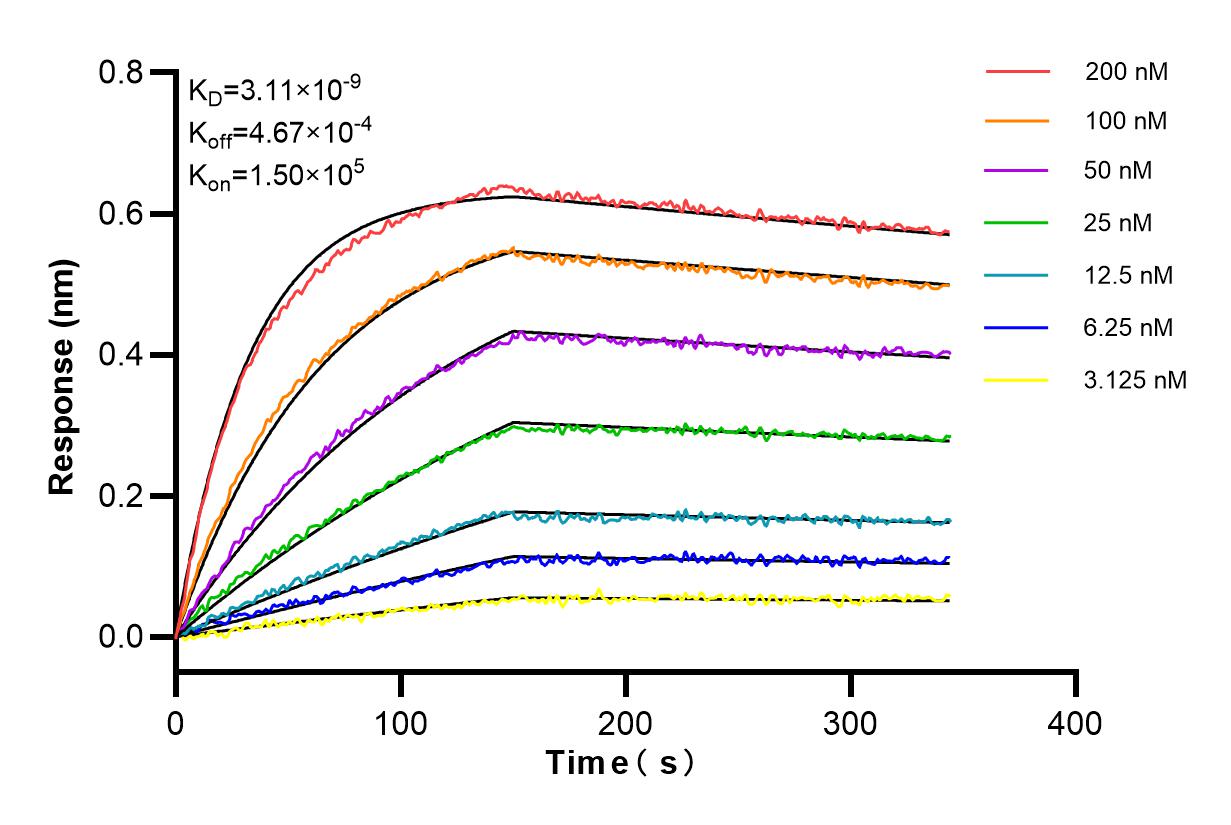Tested Applications
| Positive WB detected in | mouse liver tissue |
Recommended dilution
| Application | Dilution |
|---|---|
| Western Blot (WB) | WB : 1:5000-1:50000 |
| It is recommended that this reagent should be titrated in each testing system to obtain optimal results. | |
| Sample-dependent, Check data in validation data gallery. | |
Product Information
85122-4-RR targets GYS2 in WB, ELISA applications and shows reactivity with human, mouse, rat samples.
| Tested Reactivity | human, mouse, rat |
| Host / Isotype | Rabbit / IgG |
| Class | Recombinant |
| Type | Antibody |
| Immunogen | GYS2 fusion protein Ag18012 Predict reactive species |
| Full Name | glycogen synthase 2 (liver) |
| Calculated Molecular Weight | 703 aa, 81 kDa |
| Observed Molecular Weight | 81 kDa |
| GenBank Accession Number | BC126310 |
| Gene Symbol | GYS2 |
| Gene ID (NCBI) | 2998 |
| Conjugate | Unconjugated |
| Form | Liquid |
| Purification Method | Protein A purification |
| UNIPROT ID | P54840 |
| Storage Buffer | PBS with 0.02% sodium azide and 50% glycerol, pH 7.3. |
| Storage Conditions | Store at -20°C. Stable for one year after shipment. Aliquoting is unnecessary for -20oC storage. 20ul sizes contain 0.1% BSA. |
Background Information
GYS2 (Glycogen Synthase 2) is a key enzyme involved in the synthesis of glycogen in the liver. It catalyzes the addition of glucose molecules to the growing glycogen chain, playing a crucial role in maintaining glucose homeostasis. GYS2 is essential for liver glycogen synthesis, which acts as a critical energy reserve for maintaining blood glucose levels, especially during fasting or prolonged exercise. Impairment of GYS2 function can lead to glycogen storage disease type 0 (GSD-0), characterized by hypoglycemia and liver glycogen deficiency. The GYS2 is highest expressed in the liver, and its expression in liver was significantly higher than other tissues. (PMID:39150597; PMID:37574425)
Protocols
| Product Specific Protocols | |
|---|---|
| WB protocol for GYS2 antibody 85122-4-RR | Download protocol |
| Standard Protocols | |
|---|---|
| Click here to view our Standard Protocols |





